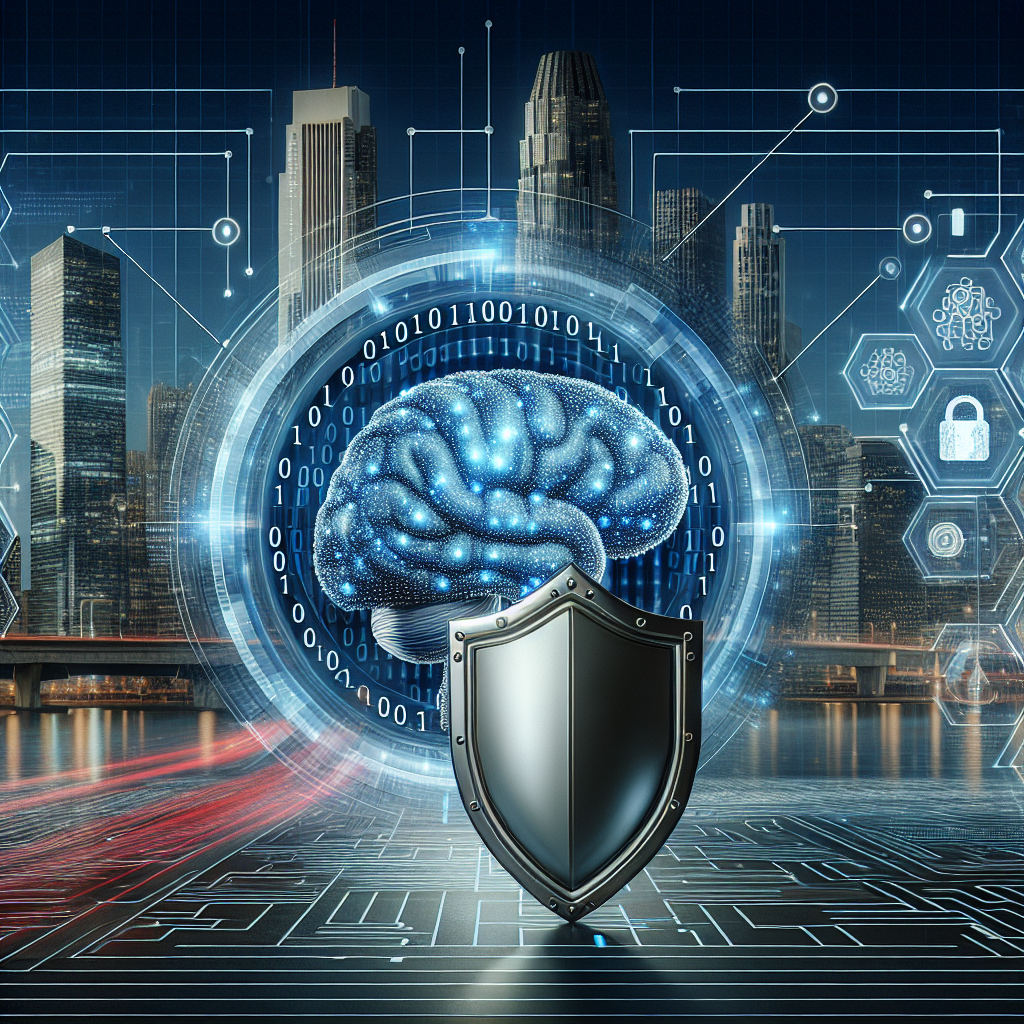In today’s digital age, government agencies are increasingly reliant on technology to carry out their operations efficiently. However, with this increased reliance on technology comes the risk of cyber threats and attacks. In order to protect sensitive government networks and data from these threats, advanced solutions such as artificial intelligence (AI) are being employed to enhance cybersecurity measures.
AI has the potential to revolutionize cybersecurity by providing real-time threat detection and response capabilities that can outpace human capabilities. By analyzing vast amounts of data and identifying patterns and anomalies, AI can help government agencies stay ahead of cyber threats and protect their networks and data from malicious actors.
One of the key advantages of using AI in cybersecurity is its ability to automate routine tasks, such as monitoring network traffic and identifying potential threats. This frees up human analysts to focus on more strategic tasks, such as developing proactive cybersecurity measures and responding to complex threats.
AI can also be used to enhance the effectiveness of existing cybersecurity tools and protocols. For example, AI-powered algorithms can be integrated into intrusion detection systems to improve their accuracy and reduce false positive alerts. In addition, AI can be used to analyze and correlate data from multiple sources to identify sophisticated cyber attacks that may go undetected by traditional security measures.
Furthermore, AI can be used to predict and prevent cyber attacks before they occur. By analyzing historical data and identifying patterns of behavior, AI can help government agencies anticipate potential threats and take proactive measures to mitigate them. This predictive capability can help government agencies stay one step ahead of cyber criminals and protect their networks and data more effectively.
Despite the many advantages of using AI in cybersecurity, there are also challenges and potential risks to consider. For example, AI algorithms can be susceptible to bias and manipulation, which can lead to inaccurate threat assessments and ineffective security measures. In addition, the use of AI in cybersecurity raises concerns about privacy and data protection, as AI systems may have access to sensitive information that could be misused or compromised.
To address these challenges and risks, government agencies must implement robust cybersecurity protocols and ethical guidelines for the use of AI in cybersecurity. This includes ensuring that AI algorithms are transparent, accountable, and regularly audited to prevent bias and ensure accuracy. It also involves establishing clear protocols for data handling and protection to safeguard sensitive information from unauthorized access or misuse.
In conclusion, AI has the potential to revolutionize cybersecurity and enhance the protection of government networks and data from cyber threats. By leveraging the power of AI to automate tasks, improve threat detection capabilities, and predict and prevent cyber attacks, government agencies can strengthen their cybersecurity defenses and stay ahead of evolving threats. However, it is essential for government agencies to implement robust cybersecurity protocols and ethical guidelines to address the challenges and risks associated with the use of AI in cybersecurity.
FAQs:
1. How does AI enhance cybersecurity for government agencies?
AI enhances cybersecurity for government agencies by providing real-time threat detection and response capabilities, automating routine tasks, improving the accuracy of existing security tools, and predicting and preventing cyber attacks before they occur.
2. What are the potential risks of using AI in cybersecurity?
The potential risks of using AI in cybersecurity include bias and manipulation of AI algorithms, privacy and data protection concerns, and the potential for inaccurate threat assessments and ineffective security measures.
3. How can government agencies mitigate the risks of using AI in cybersecurity?
Government agencies can mitigate the risks of using AI in cybersecurity by implementing robust cybersecurity protocols and ethical guidelines, ensuring transparency and accountability in AI algorithms, and establishing clear protocols for data handling and protection.
4. What are some examples of AI applications in cybersecurity for government agencies?
Some examples of AI applications in cybersecurity for government agencies include integrating AI algorithms into intrusion detection systems, analyzing and correlating data from multiple sources to identify sophisticated cyber attacks, and using AI to predict and prevent cyber attacks before they occur.

